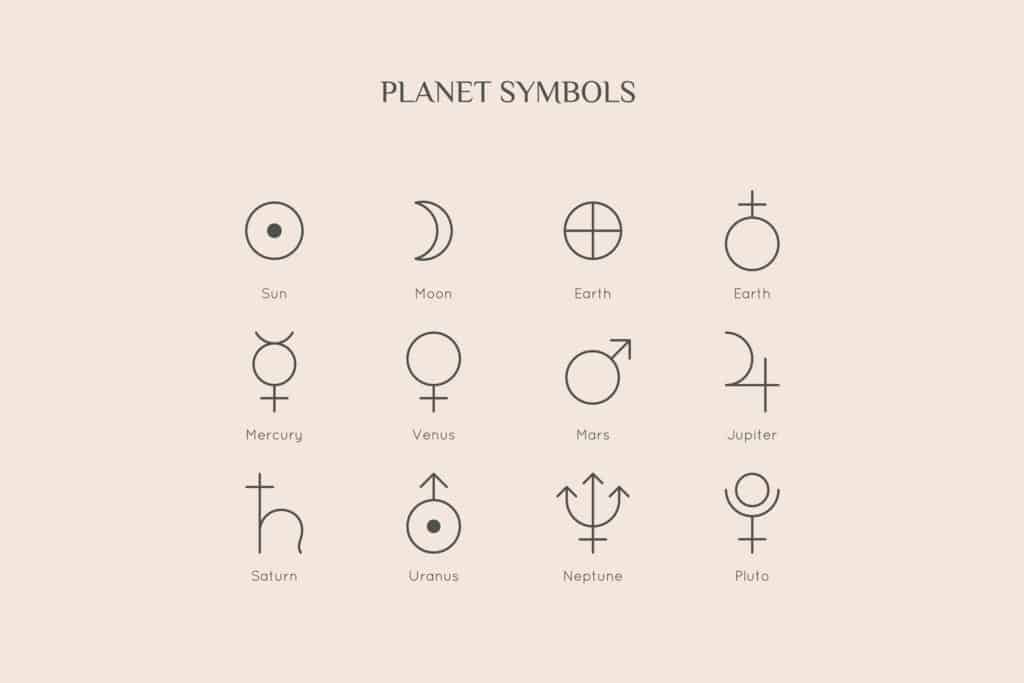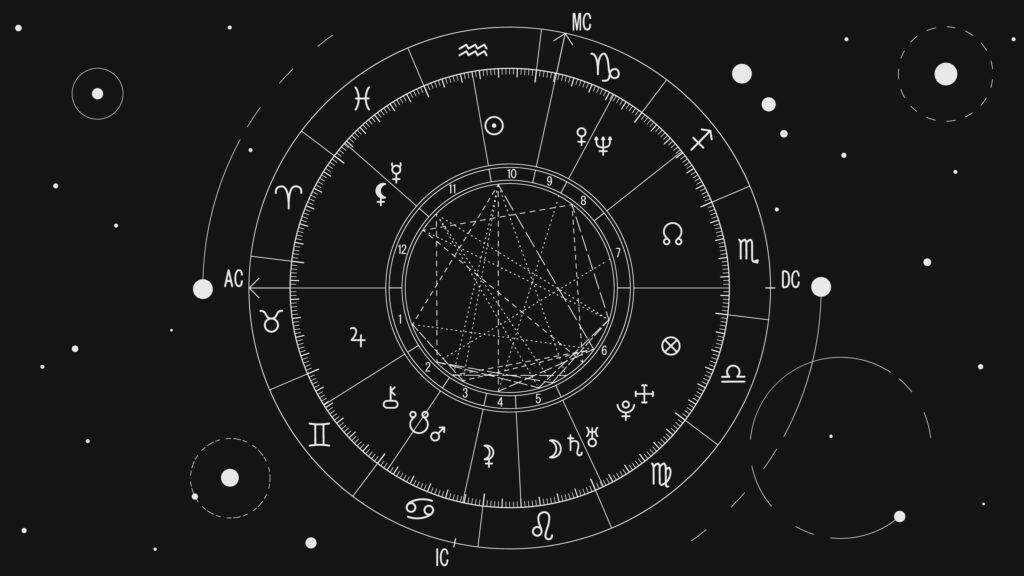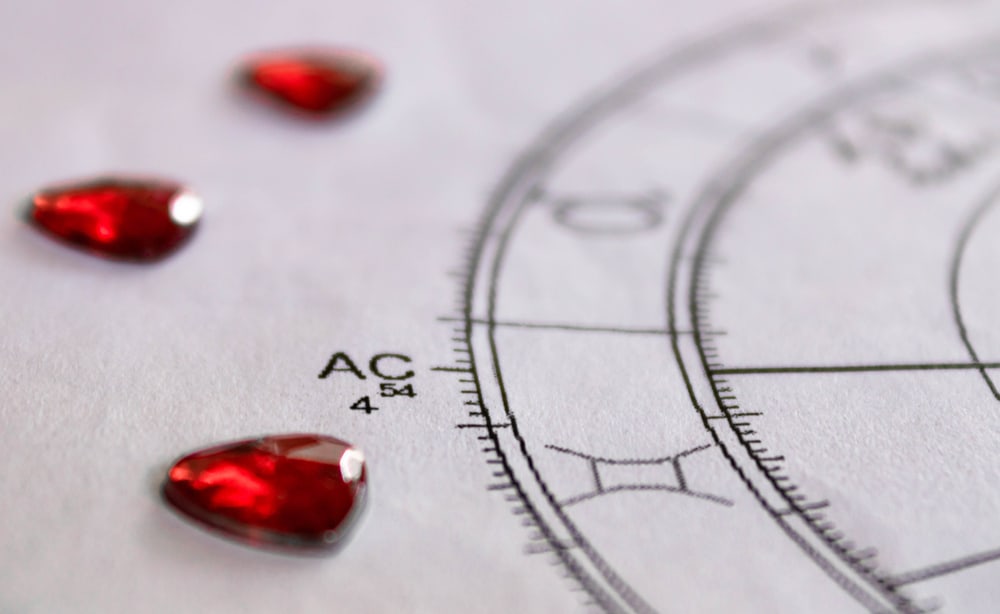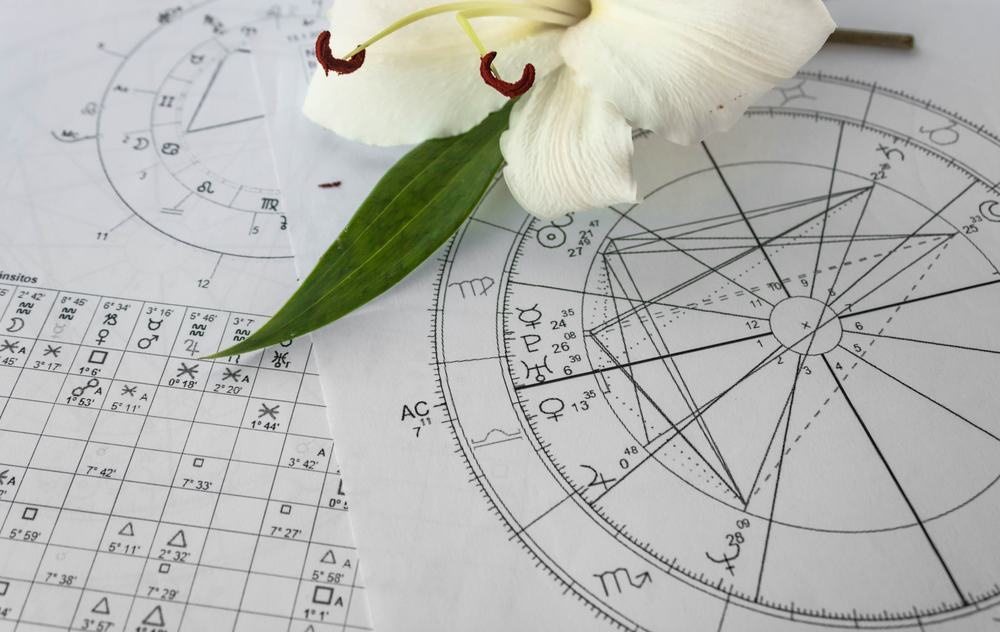
Very often, when we talk about astrology, the Sun sign is what first comes to mind. When in fact, there are many other planets in our birth charts that are equally meaningful and influential.
What are the Big 6 in astrology?
Known as the Big Six, these are the six most important placements in a birth chart. These are the Sun, Moon, Rising (Ascendant), Mercury, Venus, and Mars.
If you’re only starting with astrology, the Big Six is the first thing you need to know after your Sun sign. Similarly, when someone asks you for your Big Three signs, you should answer with your Sun, Moon, and Rising signs.
Further in the article, we’ll be discussing the Big Six in astrology and why each placement is important.
How Do I Know My Big Six in Astrology?

To find out what your Big Six are, you need to generate your natal chart. You can do so by using any of these websites that provide free horoscopes: Astro.com, Astro-Seek, and Astro Charts.
Be sure to input your correct time of birth as the Ascendant enters and exits a zodiac sign every two hours!
Once you’ve got that covered, you can now interpret what each planet and sign means. Look below to understand your Big Six in the natal chart and how they influence your life:
1. Sun (Self)

Your Sun sign represents who you are to the core. This is your conscious self and sense of identity.
The Sun is your primary expression and leadership style. It is the part of the personality that shines in the spotlight and comes forward in times of success and triumph. It is a masculine planet, related to authority figures and the father.
Another way to think of your Sun sign is as the few words you’d use if someone asked you to describe yourself.
For example, if you have a Leo Sun, you may see generosity, warmth, a flair for the dramatic, and an outgoing personality as the core of who you are as a person.
Look to the Sun to understand your ego and power urges.
2. Moon (Heart)

Your Moon sign is your emotions. This is your unconscious self and how you nurture yourself. This placement represents your domestic urges, your feminine energy, and the archetype of the mother.
It governs your innermost thoughts, feelings, and dreams. Your Moon sign determines how you’ll connect emotionally with others and what kinds of people, places, and things bring you peace and comfort.
Your Moon sign is how you feel, act, and react when no one else is watching. It is also a sign that manifests more during childhood than any other placement.
Look to the Moon to understand emotional ups and downs.
3. Ascendant or Rising Sign (Face)

Abbreviated as ASC, the rising sign is neither a planet nor an asteroid. Instead, it is the sign that was rising on the Eastern horizon at birth.
The Ascendant also influences your physical appearance, mannerisms, and how you appear to the world. This is how people perceive you and what their first impressions are.
So if a person is meeting you for the first time, it’s likely they are meeting your rising sign, aka the “mask” that you show the world. A Pisces Sun with a Gemini Rising and dominance, for example, may be much more talkative and social than the typical Pisces.
Your Rising Sign, also known as the Ascendant, is a very special part of your birth chart. It represents your face—the person you present to the world.
Your Ascendant is the first thing people notice about you. It’s what others see when they meet you for the first time. It can even influence the way you look and act in different situations.
It’s easy to forget that your rising sign changes every two hours! To know your true rising sign, you should know your time of birth. The more accurate, the better—because this number determines where your First House begins and ends.
For example, if you’re a Virgo with an Ascendant in Sagittarius, your Sun will likely be in the 10th House.
4. Mercury (Mind)

Your Mercury is your reasoning ability. This represents your intellectual urges and avenues of expression. It is how we perceive the world, write, analyze, and ultimately put our thoughts into words.
It’s common to have the same Sun and Mercury signs since the distance between the two is close.
Look to Mercury to understand how and where you communicate.
5. Venus (Love Language)

Venus is the way you show affection. This represents the pleasures you take in life, how you spend time and money and as the planet of love, what you look for in romantic relationships.
Your Venus sign reflects the kind of feminine energy you possess. All things that have to do with marriage, partnerships, and beauty are ruled by Venus.
A person with Venus in Gemini, for instance, craves adventure and thrill in a relationship. At the same time, someone with Venus in Virgo may prefer a more domestic and organized partner.
Since this planet deals with pleasure and values, it can also represent material possessions and money.
Look to Venus to understand your social urges and personal values.
6. Mars (Energy)

In contrast to your Venus, your Mars shows your masculine side. This is your raw energy and survival. Mars deals with our sexual impulses and animalistic instincts, including physical attraction.
Mars, the planet of action, determines how we use our energy to pursue our passions and desires. Mars is how you show confidence and deal with anger and confrontation.
Look to Mars to understand where you exhaust most of your energy.
Understanding Your Natal Chart

There are dozens (or even hundreds) of ways to break down a chart according to different signs, planets, houses, aspects, and more. No planet or sign is more important than the rest.
After all, knowing your Big Six is only the first step to understanding the symphony of your natal chart.
Ultimately, astrology is used to help us understand the world around us. In essence, it’s a big picture overview of your life based on the movement of celestial bodies that occurred before you were even born.
No two charts are exactly alike because no two lives are exactly alike. Your Big Six and natal chart help you see where you begin and where you might be headed.
Conclusion
Your life is like one great orchestra. Your chart is the symphony, the planets are the different sections, the signs are the instruments, and the individual musicians are the aspects.
Learning about your Big Six is highly recommended if you’d like to get started with an accessible way to interpret your natal chart. Then, branch out from there.
But because every musician is different in their interaction with peers, it is equally vital to study a chart’s aspects. This will let you see how a person’s symphony plays out in real-time.
The Big Six in astrology refers to one’s Sun, Moon, Rising (Ascendant), Mercury, Venus, and Mars signs.
The Sun represents your inner self and ego. The Moon is your emotions, your heart, and your inner child. Your Rising Sign is how the world sees you, your outward appearance. Mercury deals with how you perceive the world, think, and communicate. Venus is what you’re attracted to and how you love. Finally, your Mars sign is how you anger, your most primal urges, and how you channel your energy into pursuing what you desire.
Frequently Asked Questions
Your Big 6 In Astrology refers to the first 5 planets in your birth chart: Sun, Moon, Mercury, Venus, and Mars, plus your Rising Sign (or Ascendant).
You can find your Big 6 in astrology by generating your birth chart. You can visit any website that offers natal chart generation, such as Astro, Astro-Seek, or Astro Charts.
The Big Three in astrology is the sign of your Sun, Moon, and Ascendant.









